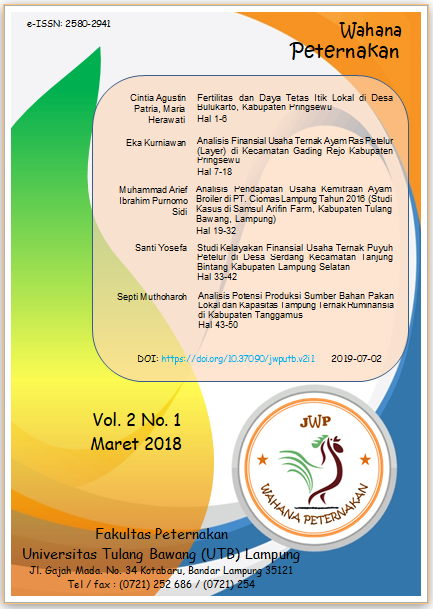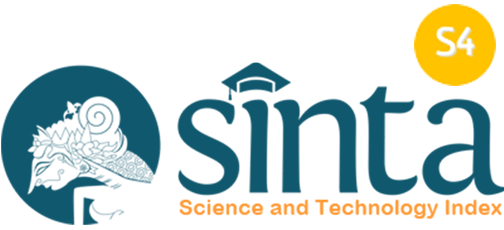Analisis Finansial Usaha Ternak Ayam Ras Petelur (Layer) di Kecamatan Gading Rejo Kabupaten Pringsewu
DOI:
https://doi.org/10.37090/jwputb.v2i1.89Abstract
The aim of this study is to determine the financial feasibility of laying fullet business (layer) in District Gading Rejo Pringsewu Regency. The research method used in this research is survey method. This method is a method by using samples taken from the population with a data collection tool in the form of a quisioner. Data analysis techniques using business feasibility analysis including R/ C ratio and Break Event Point (BEP). The conclusion of this research is business laying pullet (layer) financially is feasible. This is indicated from the results of feasibility analysis by using the analysis of R/C ratio and BEP, obtained the value of R/C ratio > 1 and BEP value of production and price < actual production value and price. Keywords: Laying chicken, R/C Ratio, Break Event PointDownloads
References
Ardiansah, Y. 2014. Karya Ilmiah Peluang Bisnis Ayam Petelur. https://mediapostku.blogspot.co.id/2014/03/peluang-bisnis-ayam-petelur.html. (diakses tanggal 8 Juni 2017)
Irhamni, MZ. 2015. Analisis Usaha Peternakan Ayam Ras Petelur (Layer) Pola Kemitraan dan Pola Mandiri di Kabupaten Blitar. Skripsi. Fakultas Kedokteran Hewan Universitas Air Langga Surabaya
Soepranianondo, K., R. Sidik, D.S. Nazar, S. Hidanah, Pratisto dan S.H. Warsito. 2013. Buku Ajar Kewirausahaan. Pusat Peneribitan dan Percetakan Unair. Surabaya.
Yuwanta, T. 2004. Dasar Ternak Unggas. Penerbit Kanisius. Yogyakarta.
Downloads
Published
How to Cite
Issue
Section
License
Copyright (c) 2019 Wahana Peternakan

This work is licensed under a Creative Commons Attribution 4.0 International License.








